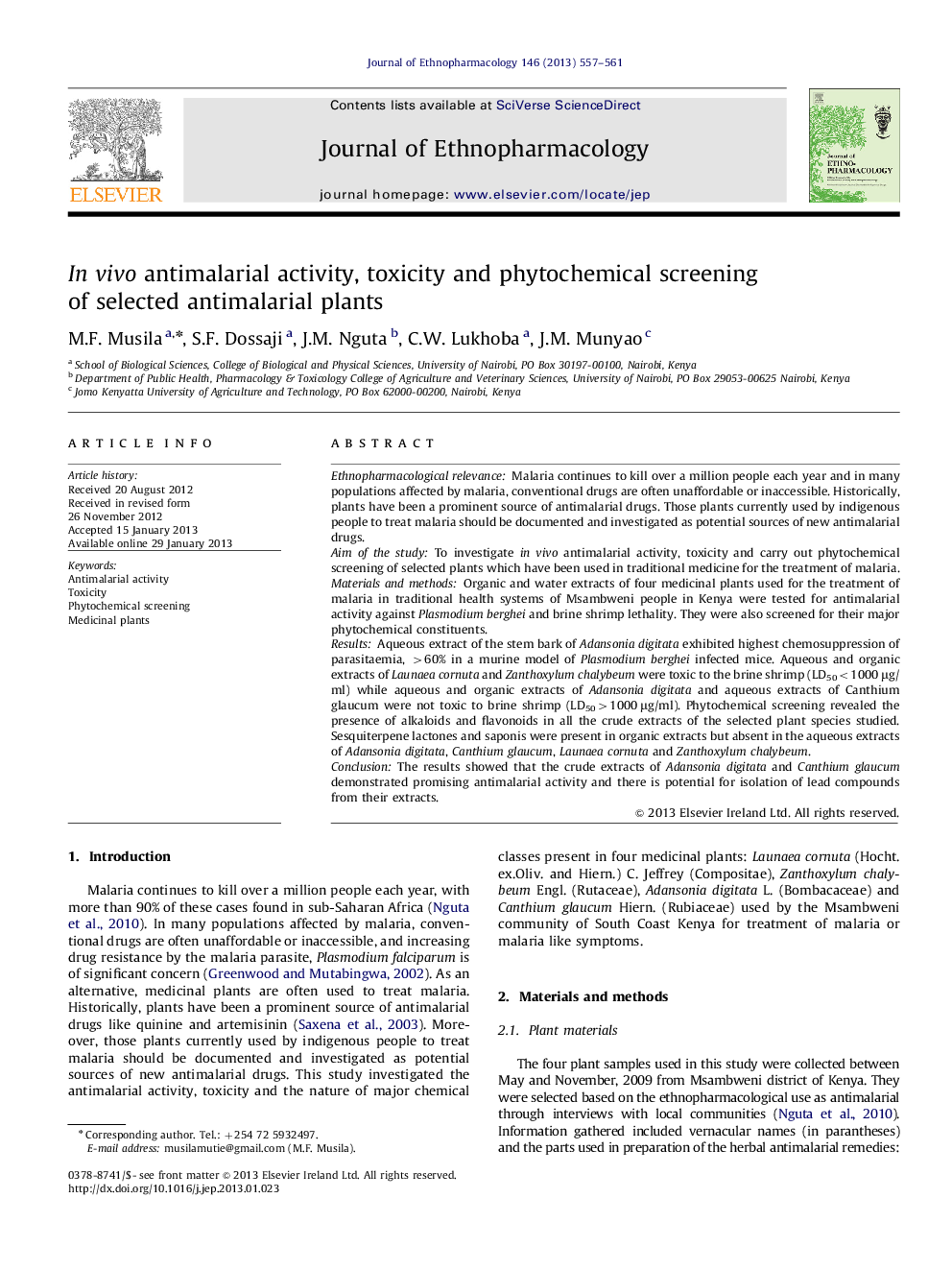| کد مقاله | کد نشریه | سال انتشار | مقاله انگلیسی | نسخه تمام متن |
|---|---|---|---|---|
| 2545516 | 1123960 | 2013 | 5 صفحه PDF | دانلود رایگان |

Ethnopharmacological relevanceMalaria continues to kill over a million people each year and in many populations affected by malaria, conventional drugs are often unaffordable or inaccessible. Historically, plants have been a prominent source of antimalarial drugs. Those plants currently used by indigenous people to treat malaria should be documented and investigated as potential sources of new antimalarial drugs.Aim of the studyTo investigate in vivo antimalarial activity, toxicity and carry out phytochemical screening of selected plants which have been used in traditional medicine for the treatment of malaria.Materials and methodsOrganic and water extracts of four medicinal plants used for the treatment of malaria in traditional health systems of Msambweni people in Kenya were tested for antimalarial activity against Plasmodium berghei and brine shrimp lethality. They were also screened for their major phytochemical constituents.ResultsAqueous extract of the stem bark of Adansonia digitata exhibited highest chemosuppression of parasitaemia, >60% in a murine model of Plasmodium berghei infected mice. Aqueous and organic extracts of Launaea cornuta and Zanthoxylum chalybeum were toxic to the brine shrimp (LD50<1000 μg/ml) while aqueous and organic extracts of Adansonia digitata and aqueous extracts of Canthium glaucum were not toxic to brine shrimp (LD50>1000 μg/ml). Phytochemical screening revealed the presence of alkaloids and flavonoids in all the crude extracts of the selected plant species studied. Sesquiterpene lactones and saponis were present in organic extracts but absent in the aqueous extracts of Adansonia digitata, Canthium glaucum, Launaea cornuta and Zanthoxylum chalybeum.ConclusionThe results showed that the crude extracts of Adansonia digitata and Canthium glaucum demonstrated promising antimalarial activity and there is potential for isolation of lead compounds from their extracts.
Graphical AbstractKey: A=Aqueous extract, B=CHCl3: MeOH (1:1) extract.Figure optionsDownload high-quality image (162 K)Download as PowerPoint slide
Journal: Journal of Ethnopharmacology - Volume 146, Issue 2, 27 March 2013, Pages 557–561